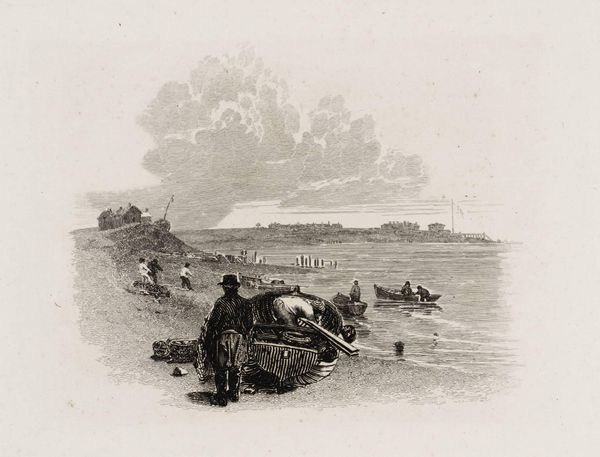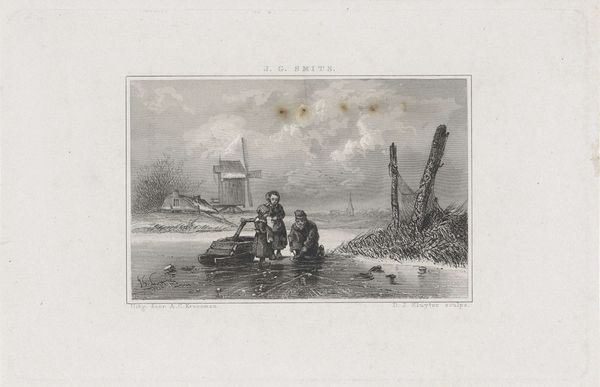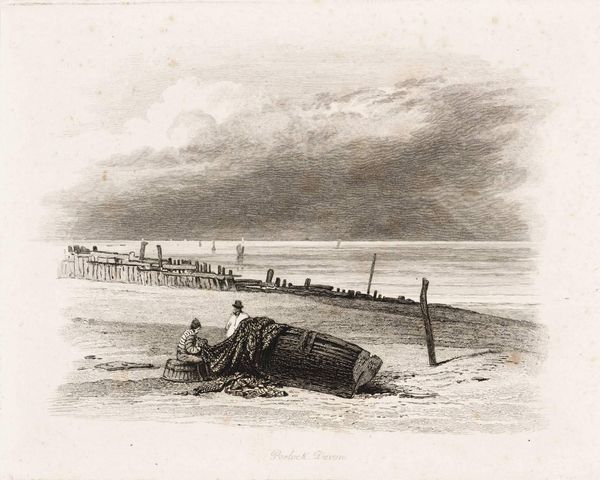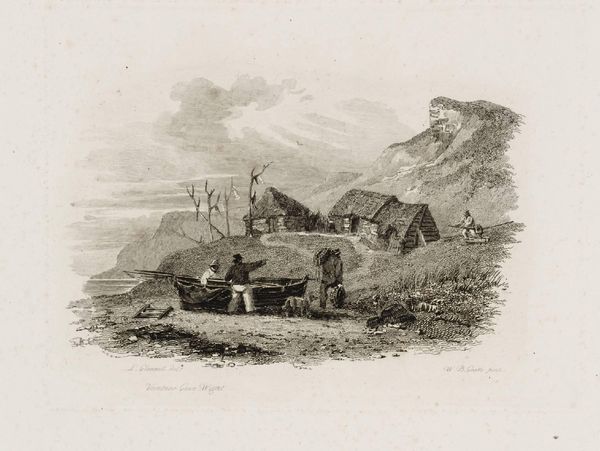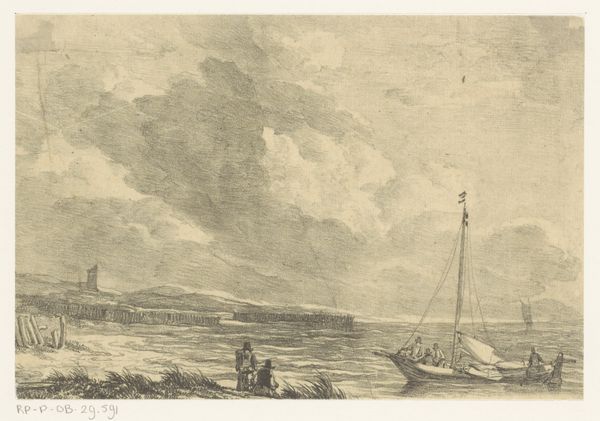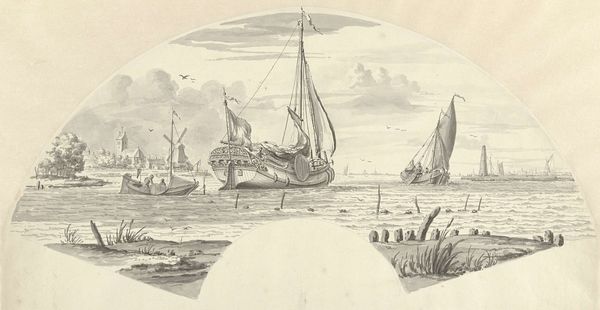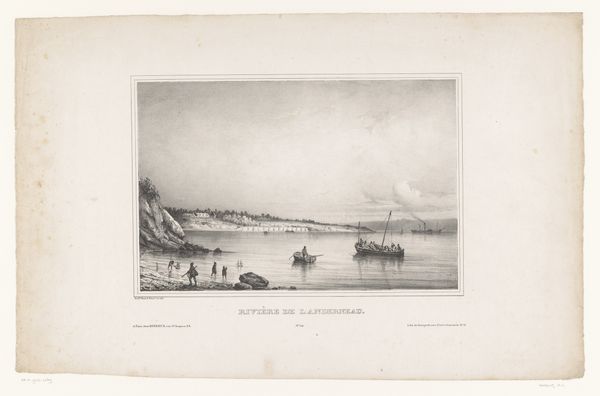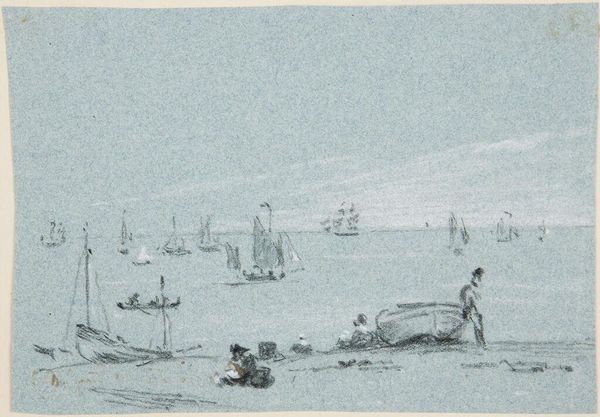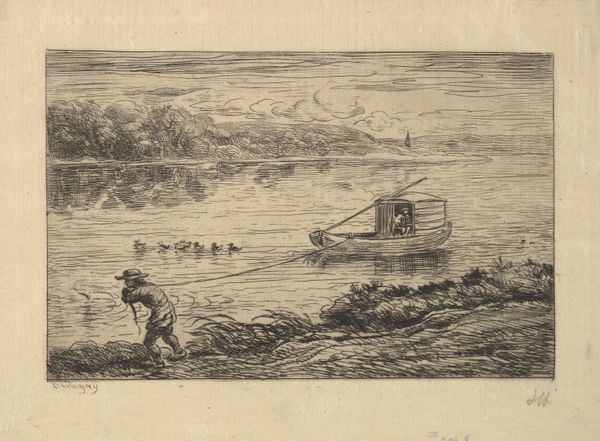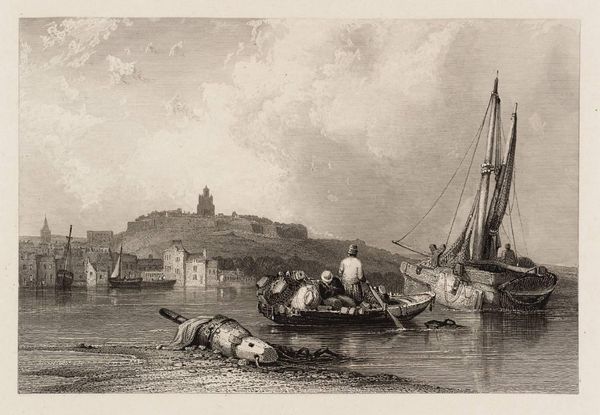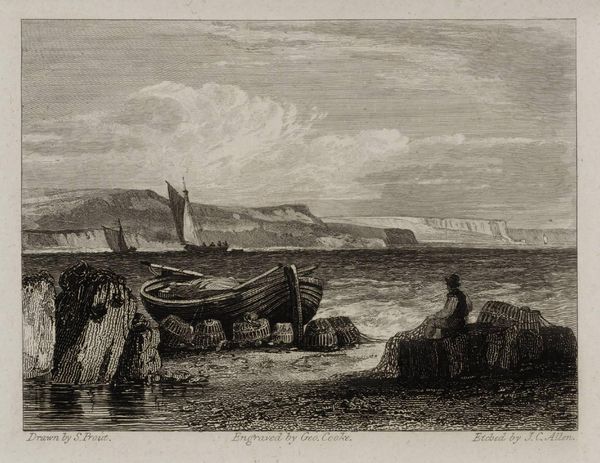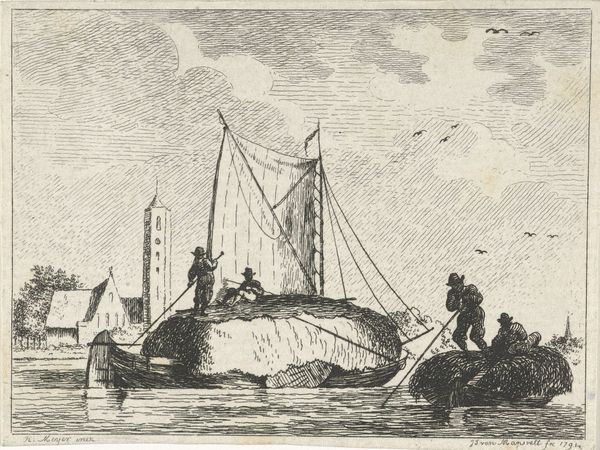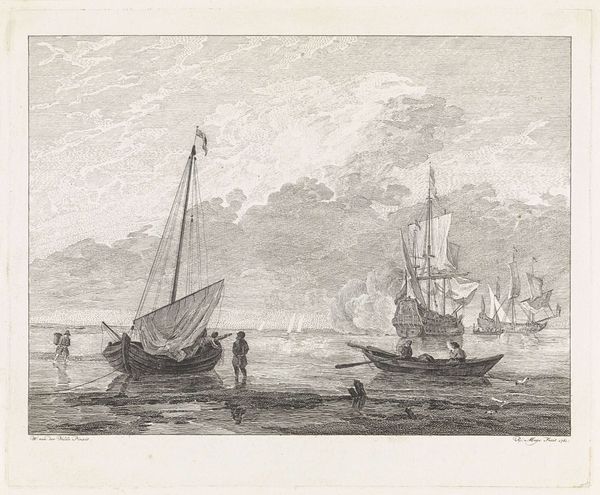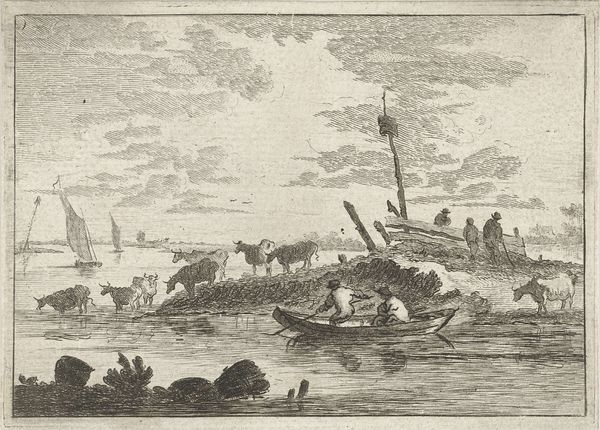
Copyright: CC-BY-NC-ND 4.0 DEED, Photo: Tate
Editor: Here we have "Bognor" by Peter De Wint, residing at the Tate. It’s quite monochrome, and the lines give it a sense of the everyday, the working lives of people at the coast. How do you see this artwork through the lens of its time? Curator: This piece offers a glimpse into the romanticization of coastal life during a period of industrial growth. These images, circulated as prints, shaped perceptions of Bognor and other coastal towns, influencing their development as resorts. What’s missing, and perhaps telling, is the grit of labor. Editor: So, it's less about reality and more about creating an image for public consumption? Curator: Precisely! De Wint is selling a carefully crafted vision, contributing to the social construction of Bognor as a desirable destination, divorced from the realities of the working class. Editor: That’s fascinating; it really shifts how I view the image. Curator: Indeed, considering the politics of imagery helps us unpack the layers of meaning embedded within seemingly simple scenes.
